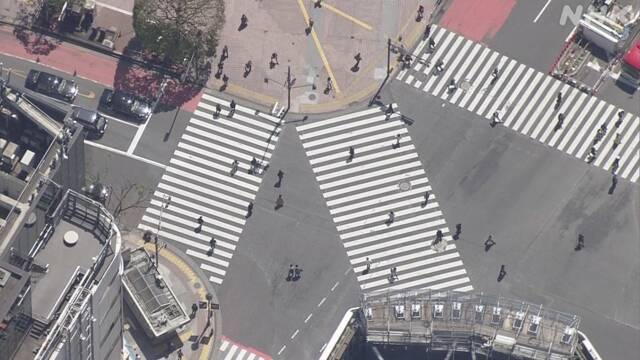Declaration of emergencies 7 40% to 70% reduction in the number of people in the central part of the prefecture Compared to the spread of infection April 15 12:26
The number of people on the 14th in the central areas of the 7 prefectures in which the state of emergency has been declared has decreased by 40% to 70% compared to before the spread of the new coronavirus infection, and has generally leveled off on the 13th.
NTT DOCOMO does not identify individuals based on the information of mobile phone base stations, and in a form that protects privacy, it divides the major cities into 500 m squares and collects data of occupants.
As a result, the traffic around Tokyo Shibuya Station at 3 pm on the 14th was 63.6% less than the weekdays from mid-January to mid-February before the infection spread. On the other hand, it increased by 4.5% compared to 13th.
The number around Osaka Station was 70.5% compared to before the infection spread, a decrease of more than 70%, and a decrease of 8.6% compared to 13th.
Around Sannomiya Station in Hyogo Prefecture, it was 47.6% lower than before the infection spread, and 0.1% higher than on the 13th.
In the vicinity of Tenjin station in Fukuoka, it was 52.6% lower than before the infection spread, and 2.9% lower than on the 13th.
In order to stop the spread of the infection, the government is calling for at least 70% fewer people to work in the areas subject to the declaration of emergency, but this data shows that the number of people in the center of each prefecture is 40% of that before the spread. It has decreased by about 70% and has been roughly flat since the 13th.

